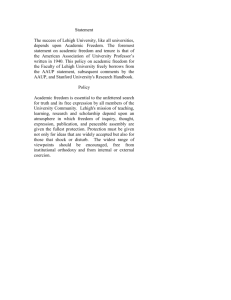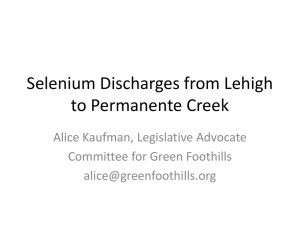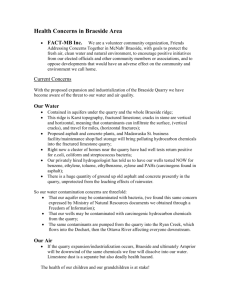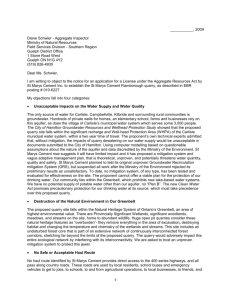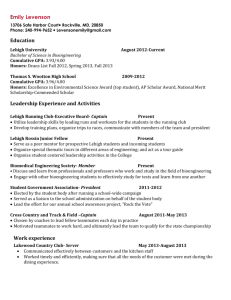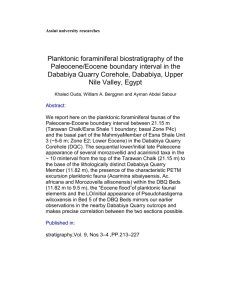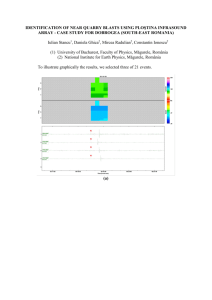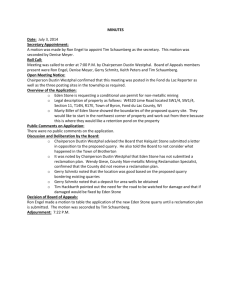1 Memo Re: Amicus Brief in Support of Appeal by Bay Area Clean
advertisement
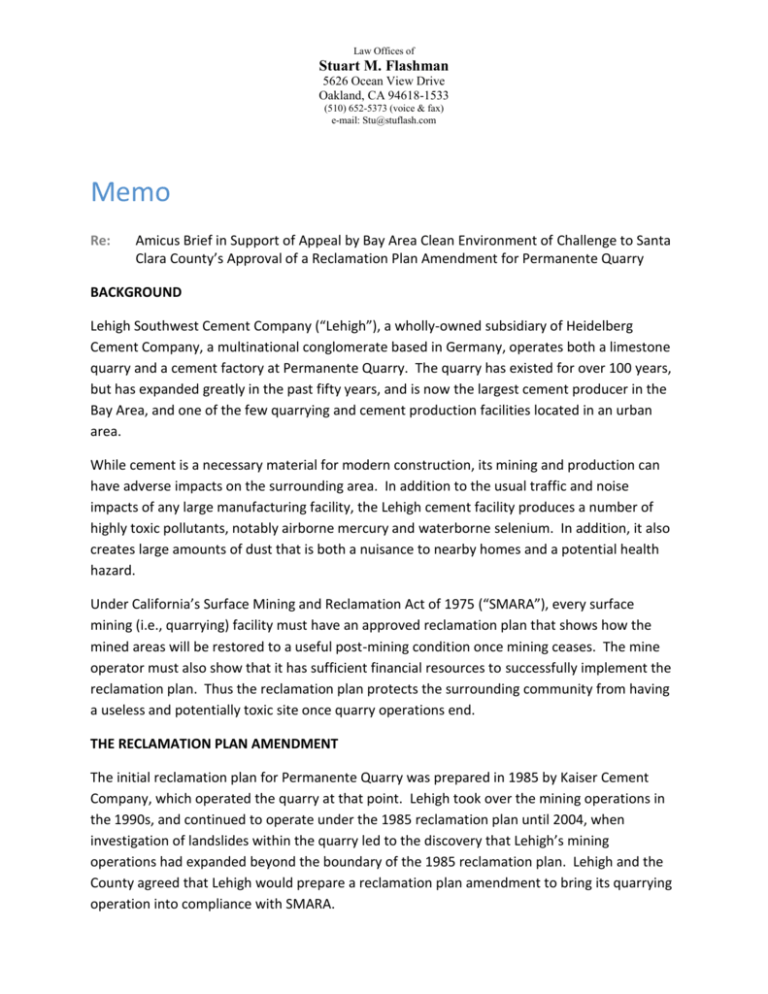
Law Offices of Stuart M. Flashman 5626 Ocean View Drive Oakland, CA 94618-1533 (510) 652-5373 (voice & fax) e-mail: Stu@stuflash.com Memo Re: Amicus Brief in Support of Appeal by Bay Area Clean Environment of Challenge to Santa Clara County’s Approval of a Reclamation Plan Amendment for Permanente Quarry BACKGROUND Lehigh Southwest Cement Company (“Lehigh”), a wholly-owned subsidiary of Heidelberg Cement Company, a multinational conglomerate based in Germany, operates both a limestone quarry and a cement factory at Permanente Quarry. The quarry has existed for over 100 years, but has expanded greatly in the past fifty years, and is now the largest cement producer in the Bay Area, and one of the few quarrying and cement production facilities located in an urban area. While cement is a necessary material for modern construction, its mining and production can have adverse impacts on the surrounding area. In addition to the usual traffic and noise impacts of any large manufacturing facility, the Lehigh cement facility produces a number of highly toxic pollutants, notably airborne mercury and waterborne selenium. In addition, it also creates large amounts of dust that is both a nuisance to nearby homes and a potential health hazard. Under California’s Surface Mining and Reclamation Act of 1975 (“SMARA”), every surface mining (i.e., quarrying) facility must have an approved reclamation plan that shows how the mined areas will be restored to a useful post-mining condition once mining ceases. The mine operator must also show that it has sufficient financial resources to successfully implement the reclamation plan. Thus the reclamation plan protects the surrounding community from having a useless and potentially toxic site once quarry operations end. THE RECLAMATION PLAN AMENDMENT The initial reclamation plan for Permanente Quarry was prepared in 1985 by Kaiser Cement Company, which operated the quarry at that point. Lehigh took over the mining operations in the 1990s, and continued to operate under the 1985 reclamation plan until 2004, when investigation of landslides within the quarry led to the discovery that Lehigh’s mining operations had expanded beyond the boundary of the 1985 reclamation plan. Lehigh and the County agreed that Lehigh would prepare a reclamation plan amendment to bring its quarrying operation into compliance with SMARA. 2 A complication was that, after having been mined for a hundred years, the quarry pit, known as the “north quarry” had been dug so deep that it went below the groundwater level for the area. As a consequence, the bottom of the pit collected groundwater, which Lehigh pumped out and drained into Permanente Creek, which runs through the quarry site on its way to San Francisco Bay. As it turns out, investigation by the Bay Area Regional Water Quality Control Board determined that the quarry pit effluent was highly contaminated with selenium, a highly toxic chemical that occurs in the limestone and other rock in the quarry. The contamination flowing into Permanente Creek violated state and federal water quality standards and could be expected to adversely affect aquatic organisms in the creek, which include the federally listed California redlegged frog (the frog made famous by Mark Twain’s story, The Celebrated Calaveras Jumping Frog). Consequently, Lehigh’s reclamation plan amendment also had to explain how it would ameliorate the selenium contamination of the creek. The contamination of the quarry pit meant that Lehigh would need a new source for its limestone. Lehigh therefore proposed to open a new mining pit south of Permanente Creek, but still within the quarry area. Because that area had not previously been mined, Lehigh would need to obtain a use permit from the County for the new “south quarry.” The reclamation plan amendment was therefore expanded to also cover this new pit. However, pressure from the State Office of Mine Reclamation to complete approval of the reclamation plan amendment convinced Lehigh and the County to put aside plans for a new pit and focus on a plan covering only the existing quarry operations. The RPA was completed in early 2012, and after multiple appeals from the Planning Commission, the County Board of Supervisors approved the RPA in June 2012. THE LITIGATION Both BACE and the Mid-Peninsula Regional Open Space District (“MROSD”) filed suit challenging the County’s approval of the RPA. In addition to challenging the County’s compliance with the California Environmental Quality Act (“CEQA”), BACE’s suit also questioned the RPA’s compliance with state regulations implementing SMARA. The lawsuit was heard in Santa Clara County Superior Court before Judge Joseph Huber, who eventually ruled in favor of the County on all of both BACE’s and MROSD’s claims. Both BACE and MROSD appealed the trial court rulings, however MROSD decided to settle its appeal. BACE also attempted to reach a settlement through a court-sponsored mediation, but that effort was unsuccessful. 3 ISSUES IN THE APPEAL While both BACE and MROSD raised multiple issues in the trial court, BACE has only appealed what it feels are the four strongest issues in the case. Two of those issues involve compliance with CEQA and two, compliance with SMARA regulations. The SMARA claims involve Lehigh’s contamination of Permanente Creek, which would continue unabated through much of the twenty-year reclamation period. Not only will this violate water quality standards, but it would also harm the California red-legged frogs that live in downstream sections of the creek. Both of these violate SMARA regulations. The primary CEQA claim has to do with Lehigh’s aborted plans to establish a new, second quarry pit. While those plans were temporarily dropped so that the RPA could be rushed through, it is clear that a new pit will be needed to replace the North Quarry, which is almost fully played out. Yet the EIR prepared for the RPA refused to consider or discuss the cumulative impact of reclaiming the North Quarry while also initiating mining in a new quarry pit. Those impacts would include increased noise, traffic, dust emissions, and potentially water and air contamination. Several of these impacts would also affect local residents. It is therefore this issue where your city might be most effective in providing support through an amicus brief.
